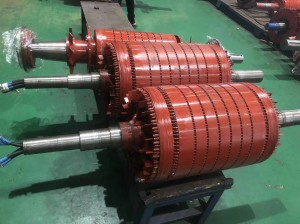In the world of three phase electric motors, the design and condition of the rotor play a vital role in overall performance. An important aspect to consider is the presence of serrations or twists in the rotor slots, especially when comparing slotted rotors to closed slot rotors.
For slotted rotors, the turning process can result in visible defects such as noticeable serrations or slot deformation. These defects are not just cosmetic but cosmetic. They can significantly affect the efficiency of the rotor and the overall performance of the motor. Serrations disrupt the smooth flow of the magnetic field, resulting in increased losses and reduced torque output. Therefore, motors with slotted rotors may overheat and shorten their service life due to increased stress on the rotor.
Closed slot rotors, on the other hand, present different challenges. While they may not exhibit obvious surface imperfections, the absence of visible serrations does not mean they are problem-free. In fact, closed-slot rotors can suffer from subtle distortions that can impair 3 phase induction motor performance. These hidden serrations cause in homo-geneities in the magnetic field, resulting in inefficiencies that may not be immediately apparent. Over time, these inefficiencies accumulate, causing a significant reduction in the motor’s ability to operate.
In summary, both slotted and closed slotted rotors are affected by serrations, which affects motor performance, albeit in different ways. Slotted rotors display visible defects that are easily identified, while closed slotted rotors may hide harmful deformations that affect efficiency. Understanding these differences is critical for engineers and technicians aiming to optimize motor performance and life. Regular inspections and maintenance can help alleviate these problems and ensure your three phase ac motor is running at its best.
Post time: Oct-15-2024


